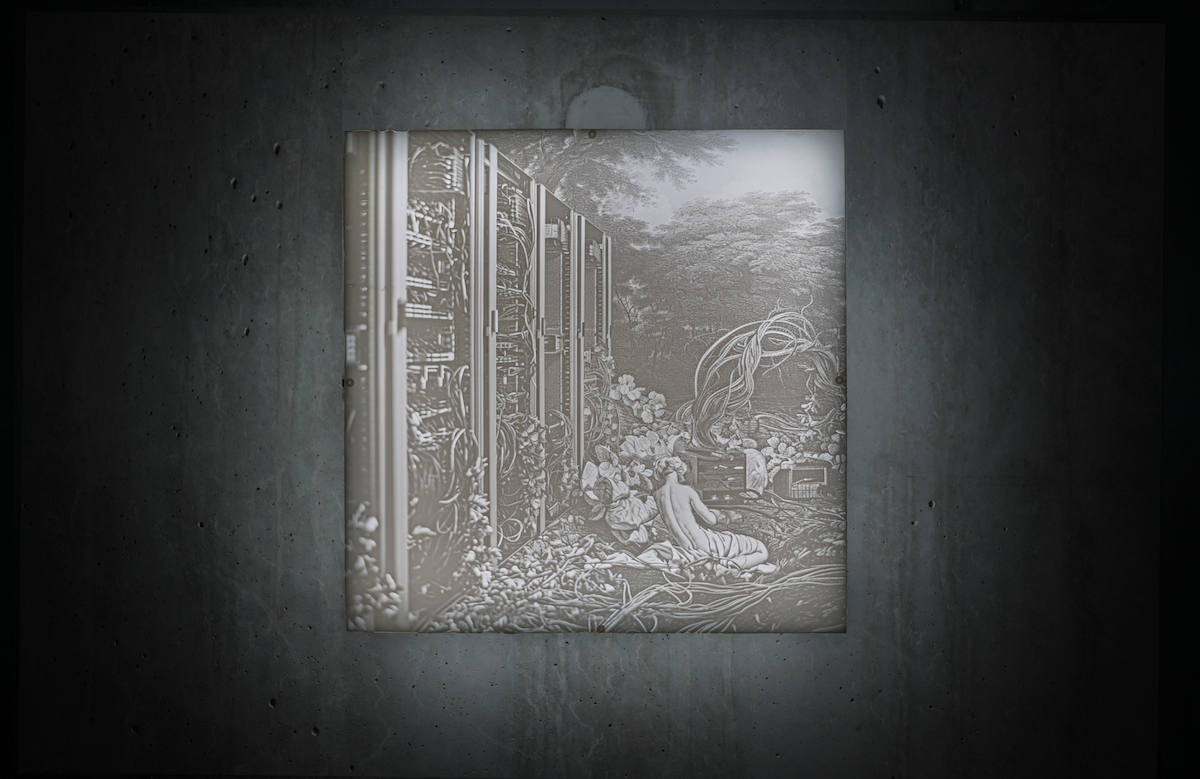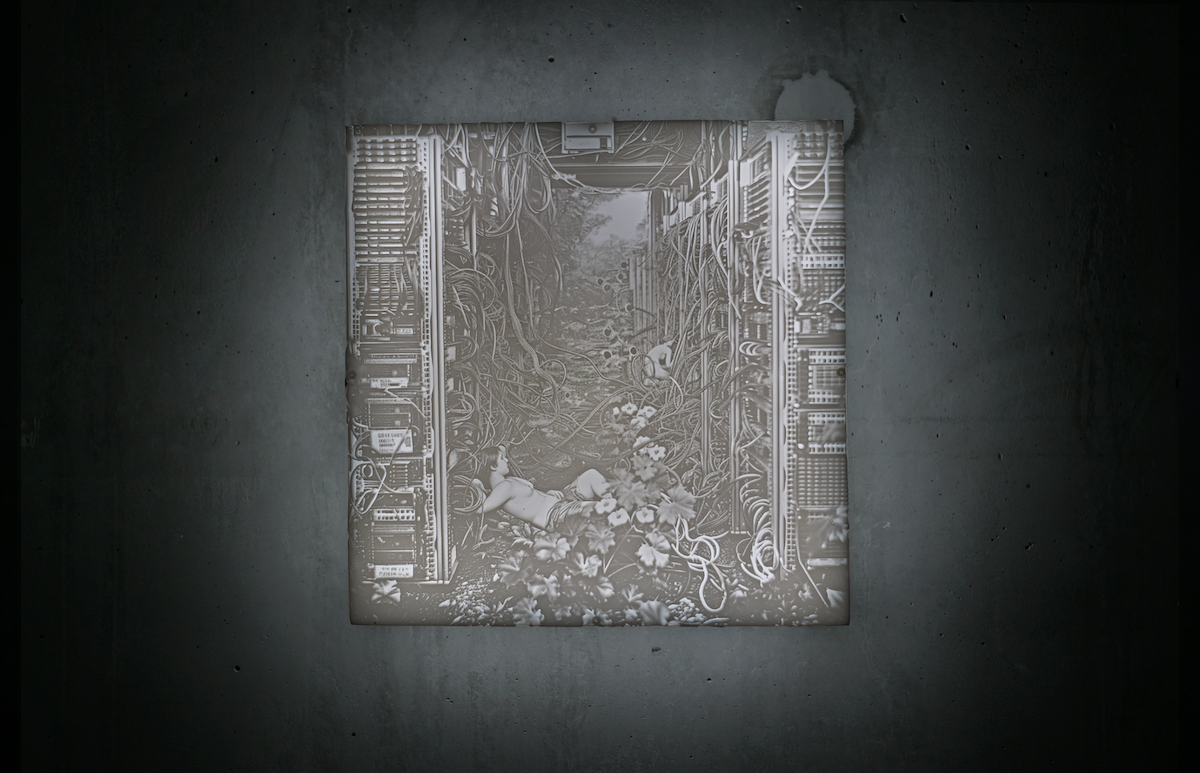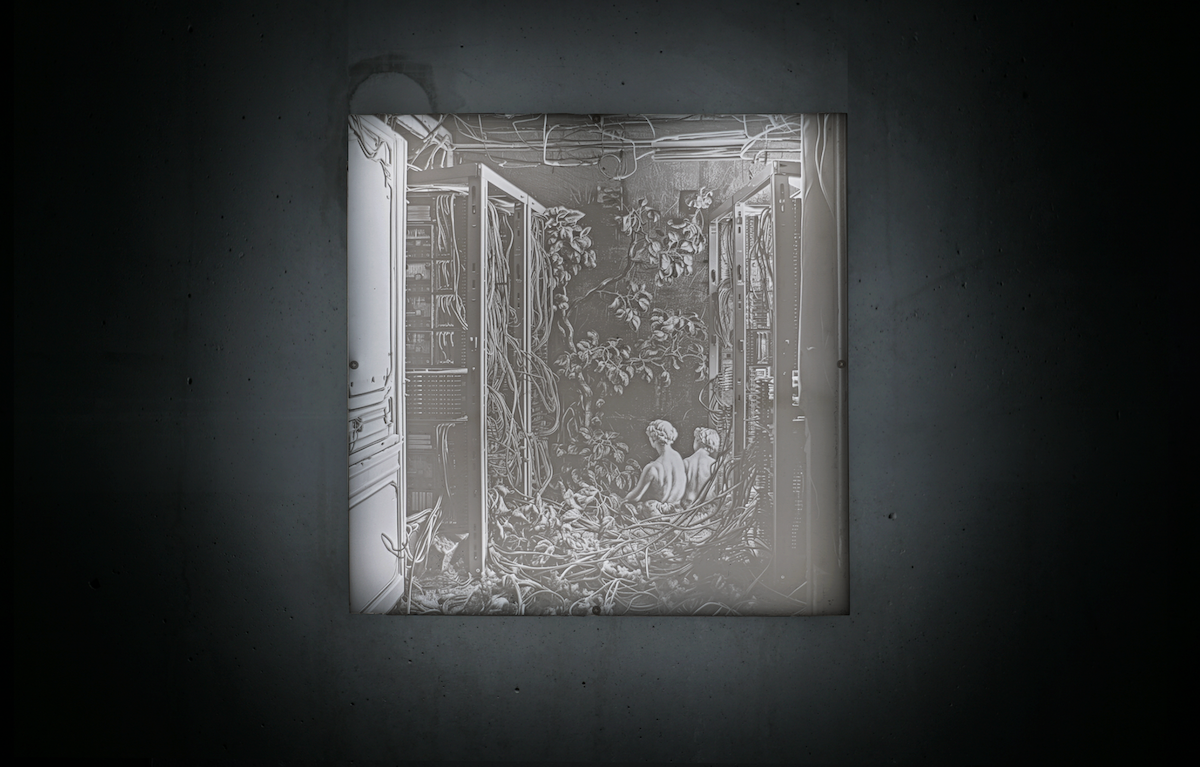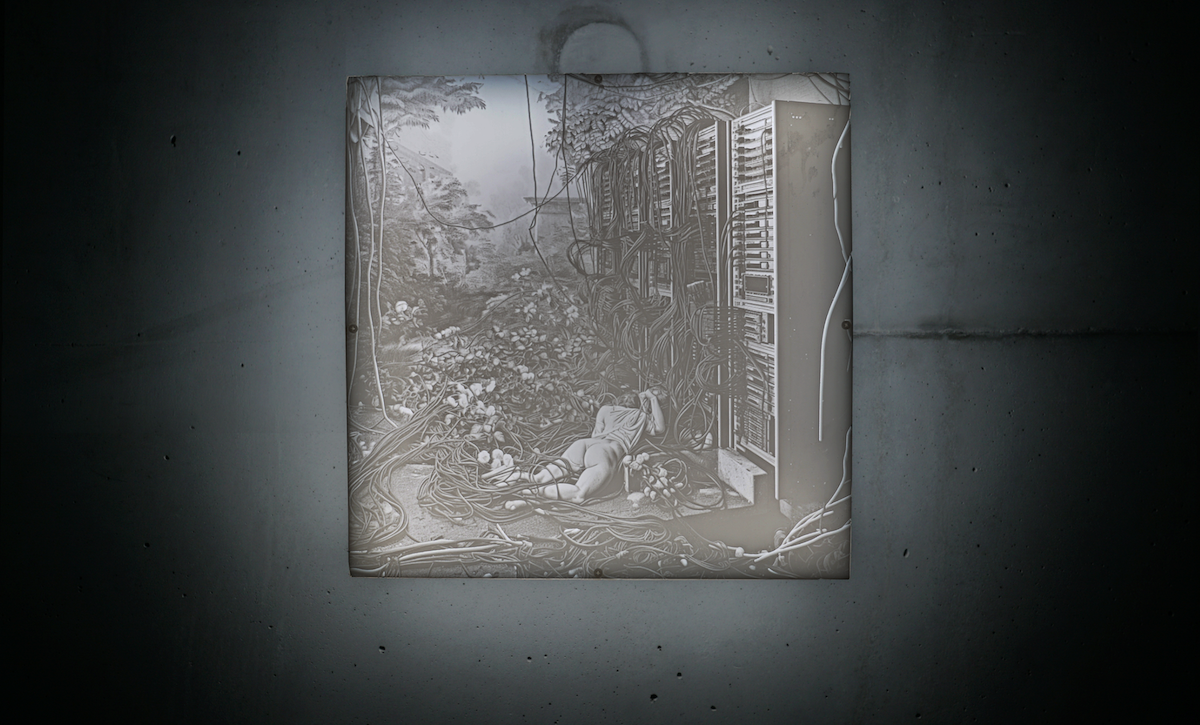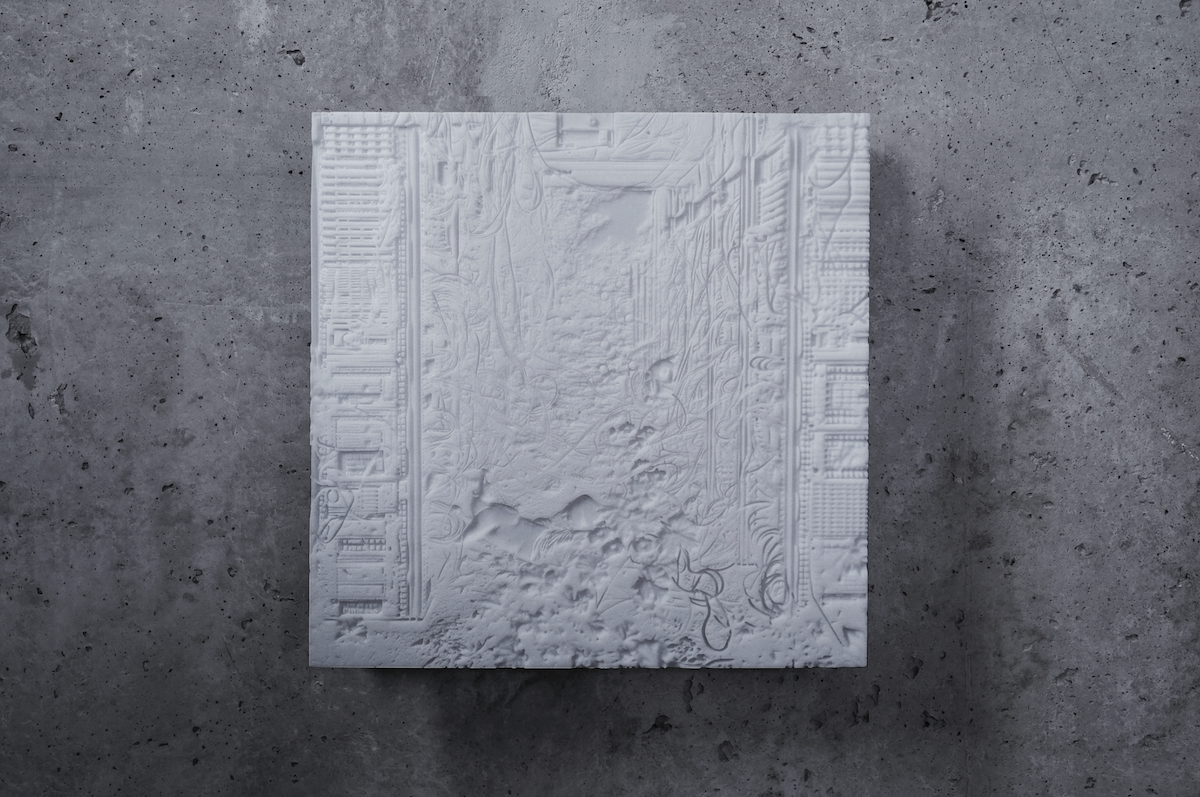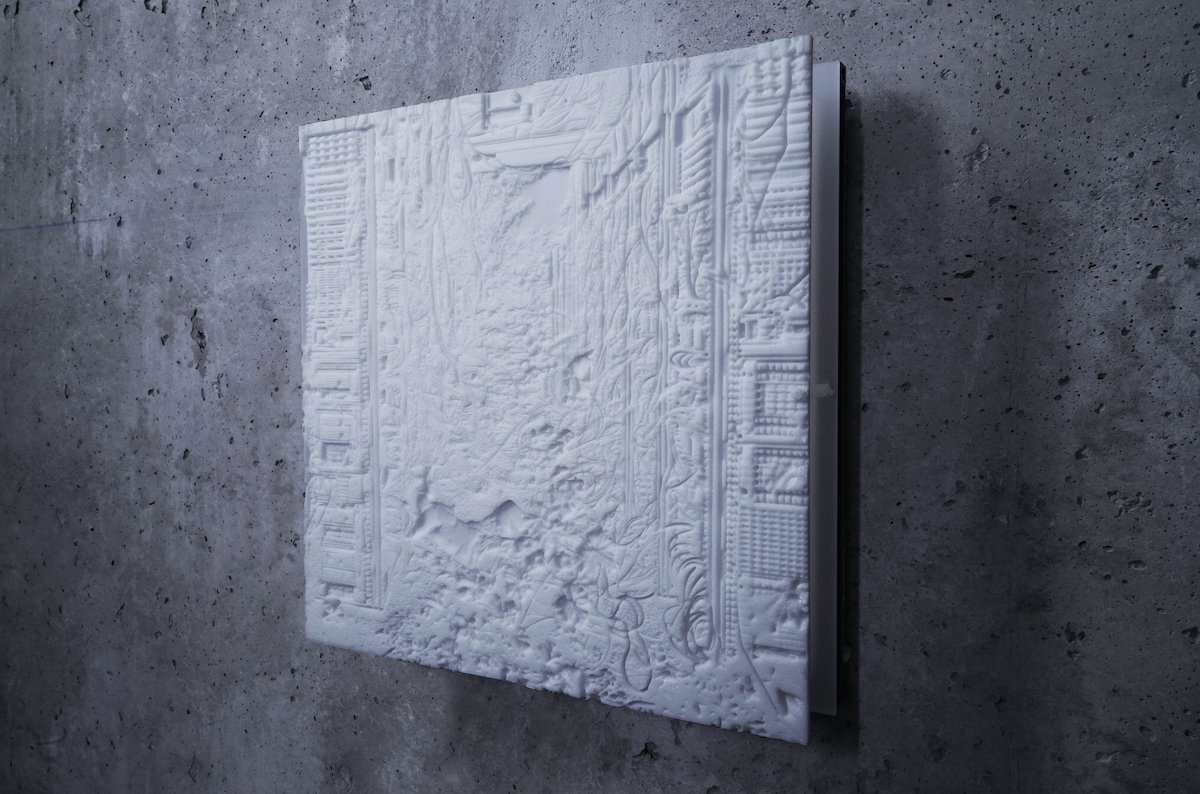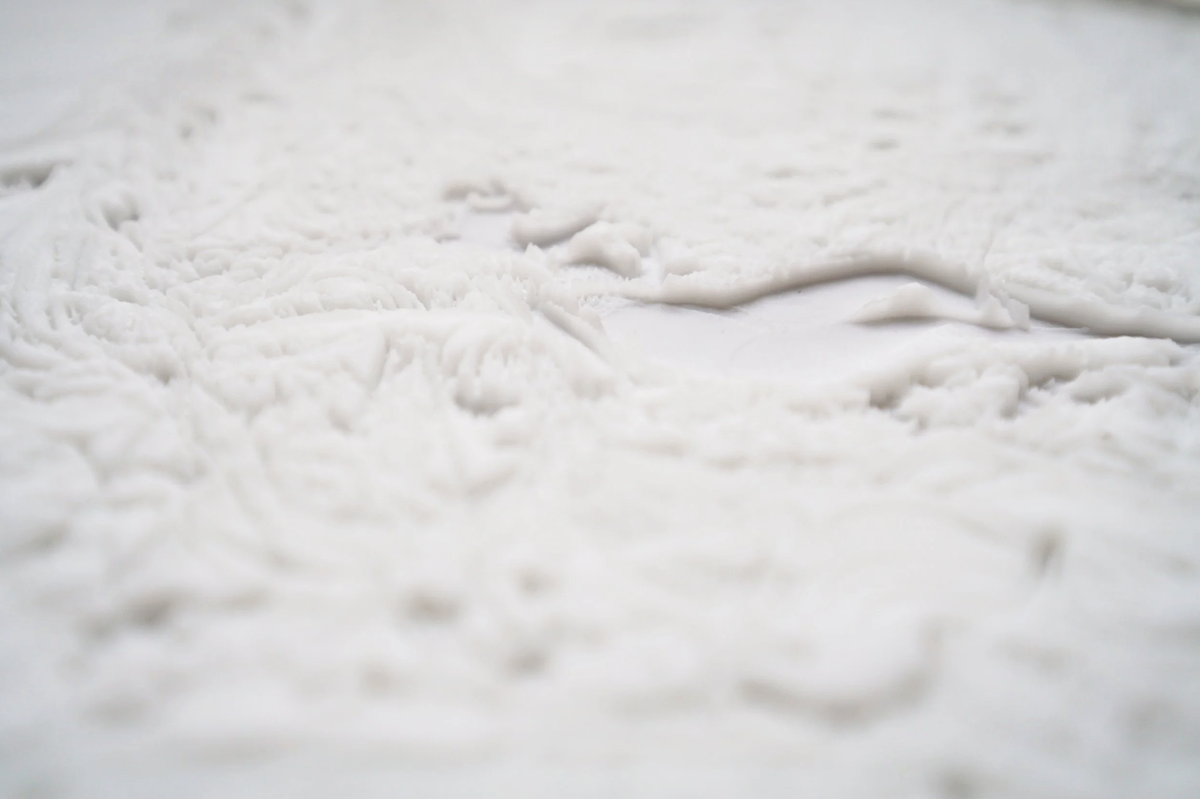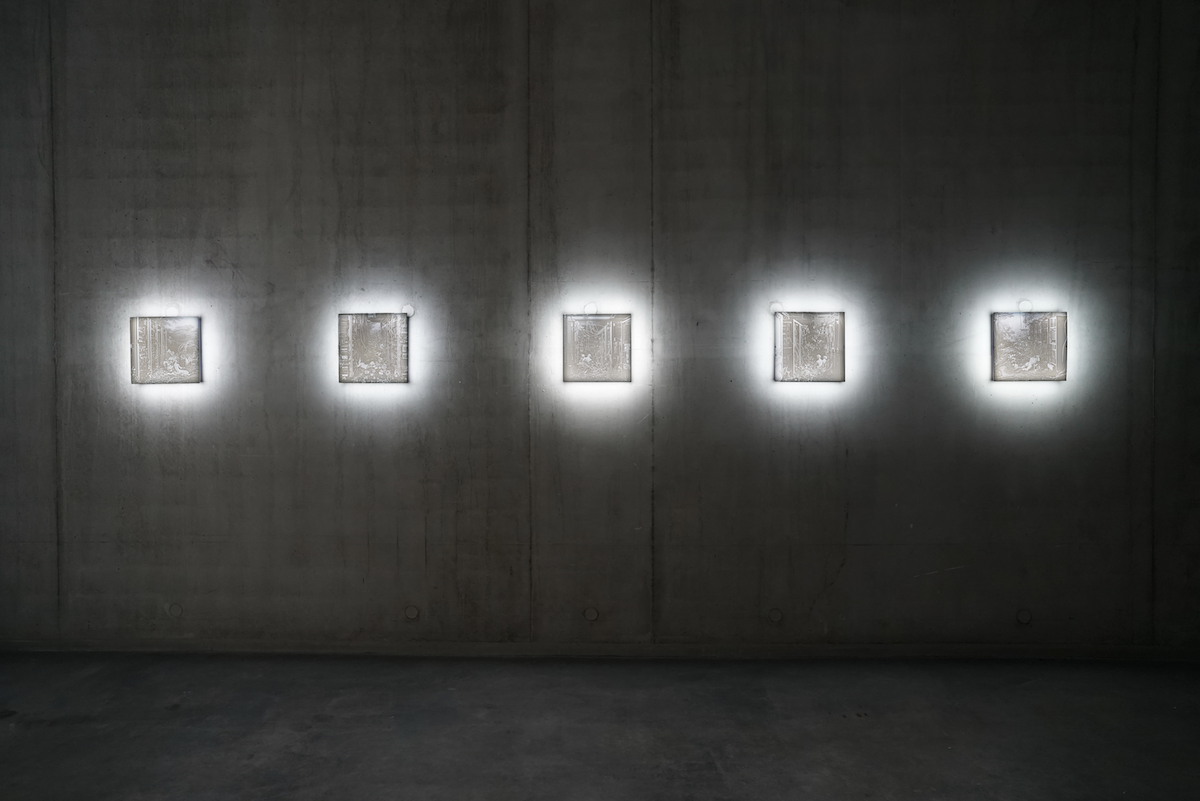Augures (Edition II)
Thomas Garnier, 2025
Concept and realisation: Thomas Garnier
Co-production: Némo, Biennale des Arts Numériques de la Région Île de France, Le CENTQUATRE-PARIS and Werktank
Photos: Thomas Garnier
Upcoming shows
2025 - Biennale Némo, CENTQUATRE-PARIS, Paris (France)
Augures is made in lithophany, a ceramic imaging technique popularised in the 19th century, from the ancient λίθος , líthos (stone) and φανός , phanós (light) lithophanies were plates engraved with reliefs that let light pass through and defined an image through the transparency of these reliefs.
The technique has been reinterpreted in stereolithographic 3D printing, lit by an electronic system rather than by candlelight. The images in Augures are themselves the fruit of a residency in which the artist experimented with images generated by artificial intelligence, training an algorithm based on eighteenth- and nineteenth-century engravings and illustrations of lush, idealised natural environments, utopias of another time.
The composition is guided to incorporate elements of contemporary technological and dehumanised landscapes, such as servers and crypto-currency farms, surveillance posts and logistics warehouses. The images compose a form of anachronistic fiction in which ethernet cables mingle indistinctly with blank grapevines. We’re not quite sure whether the world depicted is more advanced or more archaic than our own, whether it pre-dates us or follows us, and in the end it doesn’t really matter.
I’ve been interested for some time in Mark Fisher’s writings on Hauntology, a neologism coined by Jacques Derrida (Hanter x Ontologie) that encompasses the idea of the return or persistence of elements of the social or cultural past, like spectres or ghosts that haunt our collective imagination.
In many ways, AI is more like the culmination of this process of resurgence that we have been experiencing for at least the last few decades, accelerating it so rapidly that it challenges our current understanding and limits of creative processes. Giving us both a sense of unlimited possibilities and of being caught up in a bottomless self-referential spiral that seems to be leading to what Fisher called “the slow cancellation of the future”.
